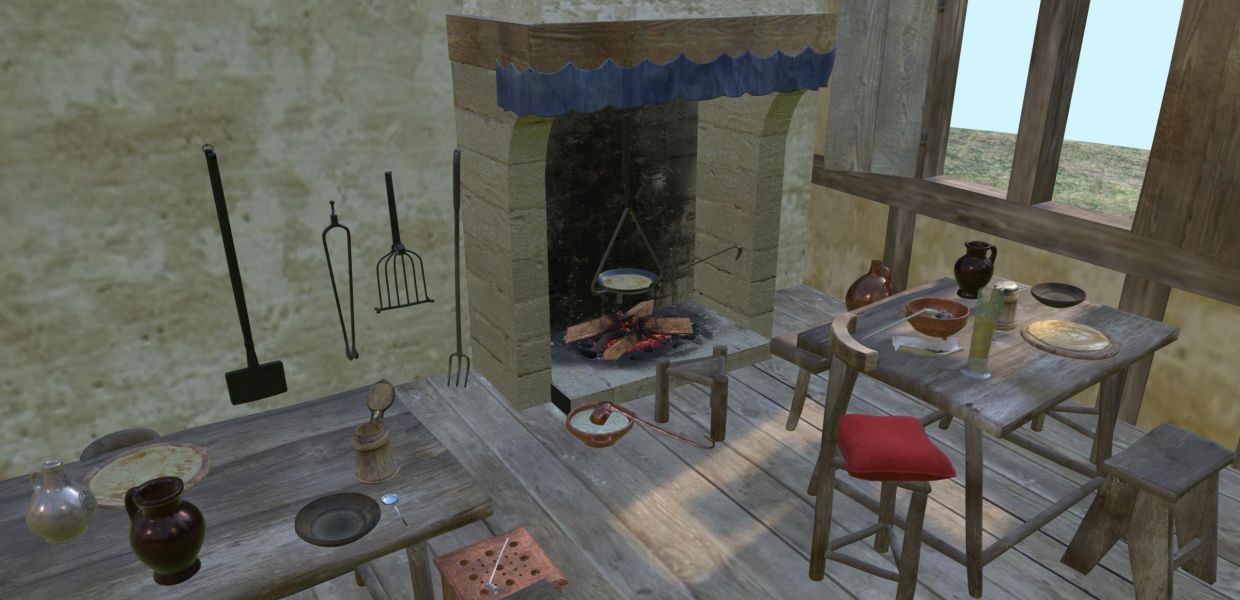Welcome to Swan Inn! Or how historical knowledge and cultural content make an intriguing virtual reality experience

Recently, we featured the Swan Inn, a virtual reconstruction of a 17th century Flemish Inn using Europeana content on Europeana Labs. We invited Daniel Pletinckx from the Belgian company Visual Dimension, who created the web application, to share some behind-the-scenes experiences and what the future holds for their project.
A guest post by Daniel Pletinckx
Despite the current virtual reality hype, there is a shortage of virtual reality (VR) solutions which can be experienced simultaneously by a group of people. The Belgian creative company Visual Dimension has been working on several solutions of this kind, one of them being the serious game solution TimeGate. This system uses natural interaction through a Kinect camera and allows school children or guided groups to explore a virtually reconstructed environment and interact with it. It can be used as an educational game, or as a virtual guided tour. The 3D walkthrough is projected on a large screen and a whole group can enjoy it. The TimeGate system is complemented by online 3D resources such as in the Swann Inn visualisation, part of the Ename 1665 project.

A screenshot of the Swan inn web application.
The virtual reconstructions Ename 1290 and Ename 1665 recreate the village and the abbey of Ename in their respective periods and rely on a wide range of sources from archaeology, history and art history. The online availability of high quality resources is crucial for the efficient and scientifically correct creation of historical virtual reconstructions. Online digital libraries, such as Europeana, are today not only one of the major cornerstones of the virtual reconstruction process, but also an unprecedented dissemination channel of the resulting 3D resources, for instance, this 3D reconstruction of a medieval writing desk. Below some examples of how Europeana content has been used in the Ename 1665 visualisation.
A reconstruction of an active living environment, such an inn, uses not only of physical objects that are preserved in museums (such as this passglass, a tall glass for drinking games popular in West and Northern Europe during 16 through 18 century), but also objects visible on paintings or described in texts from the respective historical period. A realistic visualisation requires also a correct understanding of many intangible aspects, such as customs, beliefs or historical information. In addition, this non-fiction information is turned into interactive storytelling, for which the 3D virtual reconstructions are only the stage. These stories can be short and simple, as in this Swann Inn Sketchfab resource, but also intricate, multi-layered stories in group games for educational purposes.
Enjoy a virtual tour around the Swan inn on SketchFab or on Youtube.
The Swan Inn is only one small part of the virtual reconstruction of Ename in 1665 that is being used in multiple forms: blogs, online 3D assets, 360 video that can be visualised in VR headsets, interactive applications, virtual tours or interactive educational games with natural interaction. The plan is also to fund the further 3D virtual reconstruction through crowdfunding and use it together with a youth book.
